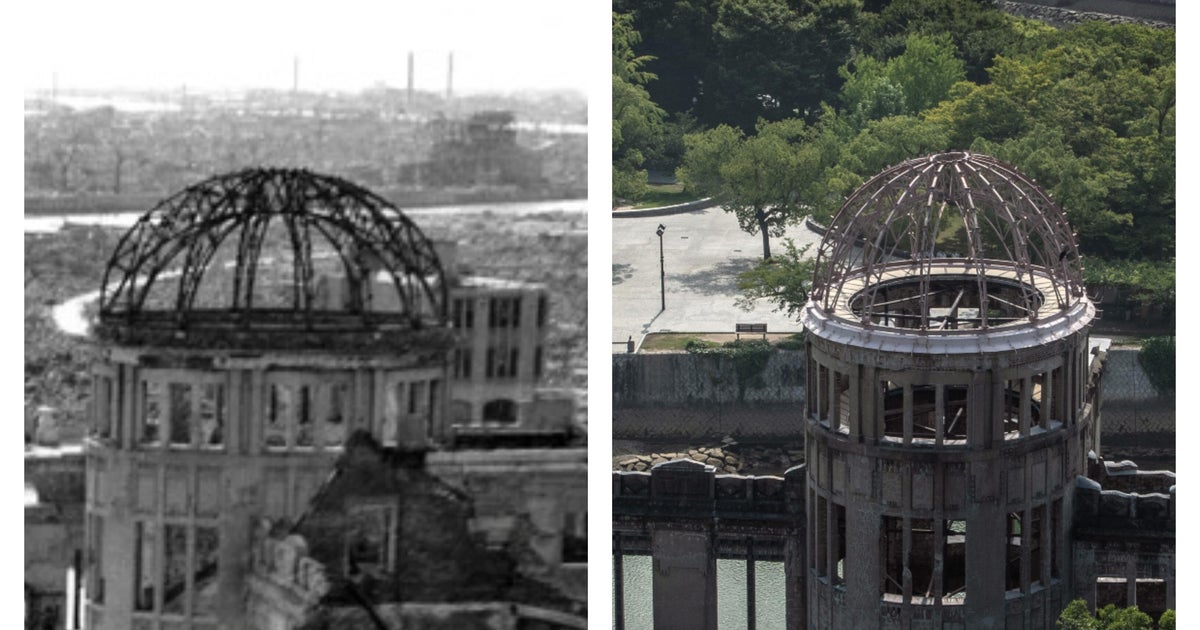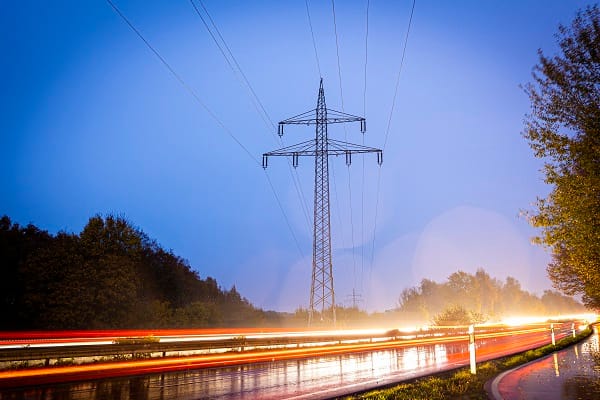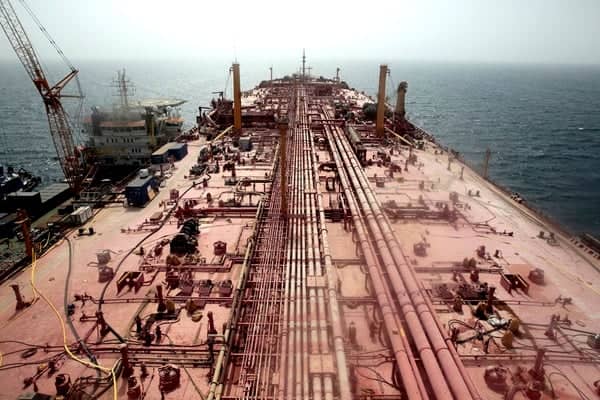Flash of Dawn, Shadow that Lasts
“Light Like Ten-Thousand Cameras Firing at Once”
Toshiko Tanaka still hears the shutter-click moment when the morning itself burned white. She was six, waiting for breakfast, when a single bomber cut through the cloudless sky of her hometown.
Two Briefly Opened Doors, a Lifetime of Doors Shut Forever
- Aug. 6, 1945, 8:15 a.m. – A silver B-29 known as the Enola Gay releases the uranium bomb nicknamed Little Boy above Hiroshima.
- Aug. 9 – Nagasaki meets Fat Man.
- Sept. 2 – Japan boards the USS Missouri and signs surrender, ending the Second World War.
Casualties and Echoes
By New Year’s Eve 1945, roughly 210,000 souls—Japanese civilians mingled with Korean forced laborers—had slipped away, some vaporized in a flash, others fading weeks and months later under the slow torment of radiation poisoning. Still more pregnancies ended in silence. Cancers bloomed years afterward like unwelcome flowers at an abandoned graveside.
Unmatched Distinction, Unwanted Fame
No other cities on Earth have ever known the blast of atomic fire. Yet even eight decades on, the scars refuse to heal. Miss Tanaka, now in her eighties, told CBS News not long ago that every quiet August sunrise still reminds her: “It wasn’t just metal and glass that melted that morning. Part of our humanity did, too.”
Bombing of Hiroshima
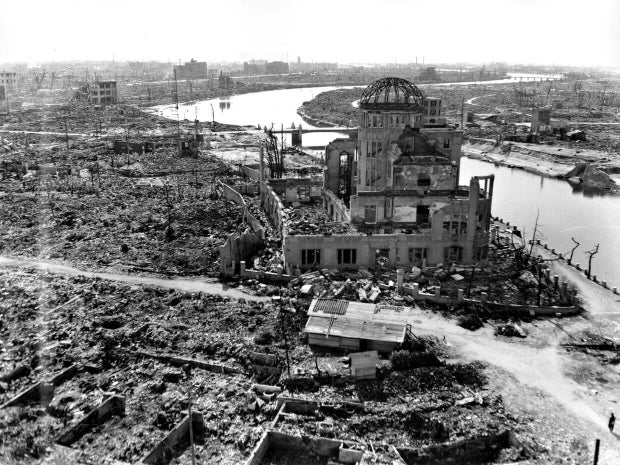
From Exhibition Hall to Eternity: Hiroshima’s Prefectural Industrial Promotion Hall in Memory and Meaning
The skeletal silhouette that rises above Hiroshima’s Peace Memorial Park is far more than concrete and steel. Once celebrated as the Prefectural Industrial Promotion Hall, this domed structure now stands as a haunting witness to the dawn of the nuclear age. Its story threads through ambition, annihilation, and the hard-won hope of a city reborn.
A Vision of Modernity—and Modern Marketing
Crowning a City on the Rise
August 6, 1945: Moment of Truth Under the Dome
At 8:15 a.m. the hall lay almost directly beneath the hypocenter of the world’s first wartime atomic blast.
Three facts forged its fate:
Silent Inventory
From Rubble to Reverence
1949–1955: City planners faced a wrenching choice—level the remains to erase pain, or preserve them as testimony.
Citizen petitions prevailed, and the dome’s twisted frame was stabilized rather than demolished.
1979: Recognition reached international scope as the United Nations listed the site among humanity’s first cultural properties deserving protection for its “outstanding universal value.”
A Living Classroom Without Walls
Each year, more than 1.2 million visitors follow winding paths around the preserved ruin.
Their itineraries map a quiet curriculum:
What the Ruin Teaches Without Uttering a Word
Beyond Hiroshima: Echoes Across Generations
From schoolchildren sketching the cracked corbel arches to heads of state laying wreaths in somber silence, the hall’s silhouette has transcended geography.
It has appeared on album covers, postage stamps, and in countless travel journals, each representation an echo of the original plea: What can we learn from a single morning’s light turned darkest noon?
The Prefectural Industrial Promotion Hall no longer showcases industry. Instead, it promotes a quieter commerce—one of memory, conscience, and the fragile trade-off between innovation and responsibility.
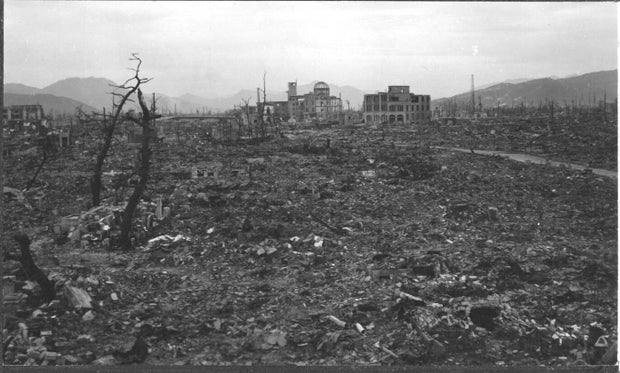
A Sentinel Survives the Inferno
On 6 August 1945, the world shrank to a single flash above Hiroshima. Less than 600 metres below that blinding core, one solitary high-rise refused to kneel. Its concrete bones blistered, its iron lungs torn open, yet the Hiroshima Prefectural Industrial Promotion Hall lingered—cracked, hollow, unforgettable.
Seconds After 8:15 a.m.
- Pressure spiked at over five tons per square metre.
- Temperature rocketed beyond 3,000 °C at ground level.
- Everyone occupying the hall—and every physical trace of them—was erased in one catastrophic breath.
The Dome That Would Not Collapse
The bomb detonated virtually overhead. Its blast hammered the building from crown to cellar. Still, the copper-clad cage dome took the assault head-on. While walls peeled away and the roof dissolved into embers, the skeletal frame held—battered yet unbroken.
From Wreck to Witness
In the ashes of 1945 few believed the charred carcass would endure seventy-seven summers and winters. Yet, year by year, braced by civic will and international support, it survived storms, tremors, and souvenir-hunters. Finally declared the Hiroshima Peace Memorial, the ruin stands as the city’s most eloquent silence—no windows, no doors, just a weather-worn promise.
What It Tells Us Now
Tourists no longer see offices inside; they see absence—empty galleries where clocks froze at the instant of obliteration. In that negative space lies a plea: Remember the vanished, and guard the fragile thread between peace and annihilation.
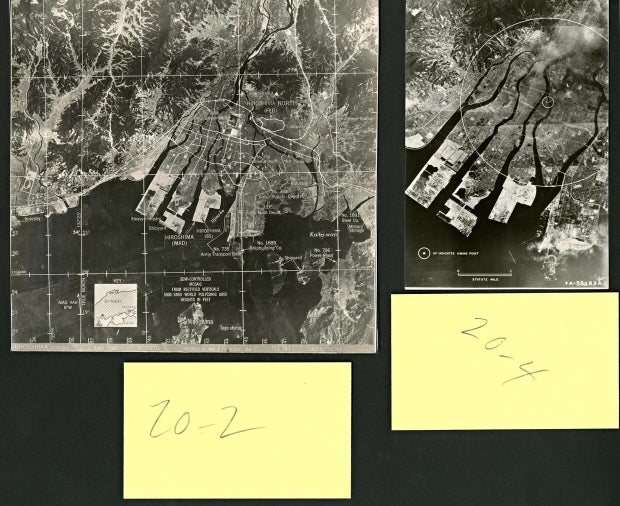
Hiroshima in 1945: The Moment the Sky Split the City in Two
A Reconnaissance Lens Frozen in Time
Before the sun rose on August 6, 1945, Hiroshima slumbered beneath soft morning haze—its wooden bridges, busy canals, and grid of brick houses all intact. A silent U.S. reconnaissance aircraft, gliding above the clouds, captured that calm with unblinking precision.
Forty-three seconds later, a bloom of nuclear fire roared upwards, shredding the orderly streetscape into unrecognizable debris. The same camera platform returned and pressed the shutter, creating two photographic halves: one alive, one annihilated.
Numbers Tell a Harsher Story
- 60,000+ buildings lost to blast, heat, and wind—roughly two out of every three.
- An area that once shimmered with tile roofs and cherry trees now glistened with rivers of molten metal and ash.
- Neighborhood centers—homes, schools, tram depots—were wiped clean in a single heartbeat, leaving ghostly street outlines the eyes of pilots could see even at altitude.
What Vanished in a Snap
Economic Core
The busy commercial spine along Hondori arcades vanished. Shop lanterns, ration lines, and morning chatter fell into a crater of splintered beams.
Civic Landmarks
The Prefectural Industrial Promotion Hall—later remembered as the skeletal A-Bomb Dome—stood only in partial silhouette against the scorched plain.
Riverside Districts
Traditional machiya townhouses that hugged the Ōta River’s gentle bends were replaced by drifting embers and blackened barges.
The Lens That Became Evidence
The U.S. photo analysts who unspooled the film marked each frame with red wax pencils, filing them in a classified folder stamped “Museum of World War II.” Their tight annotations—angle of attack, cloud cover, focal length—stand today as a quiet confession of calculated destruction.
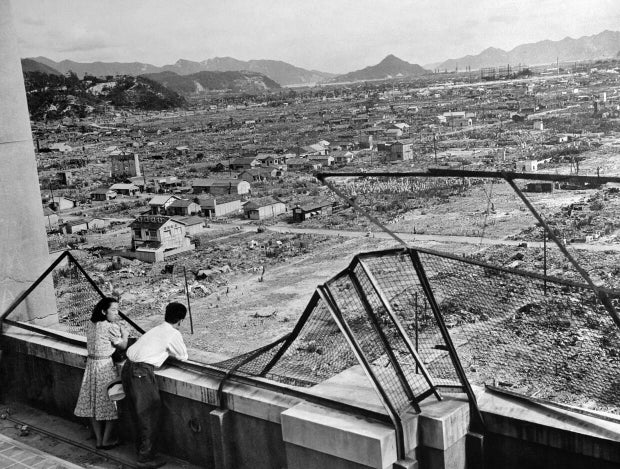
The Phoenix City: Hiroshima, Spring 1948
A City Still Breathing Ash
Three Aprils had passed since the flash seared the sky, yet Hiroshima in 1948 remained an open wound on the earth. Twisted girders reached upward like the fingers of a skeleton, and charcoal-colored mounds of brick substituted for neighborhoods that once echoed with laughter. When the wind rose, it lifted a fine gray dust that tasted of stone and sorrow.
Patchwork of Survival
Among the sea of ruin, a scattering of structures dared to defy the nothingness:
Green Fingers of Hope
Cracks in the asphalt discovered rogue blades of grass, and along the river, clusters of morning glory vines climbed the iron ribs of fallen bridges. Children too young to remember paved streets planted beans in tin cans, placing them on windowsills like tiny lanterns of growth. Even the black rain that once poisoned the soil now nourished these stubborn seedlings of renewal.
The Quiet Sound of Returning Life
Early morning brought the rumble of handcarts and the distant clang of hammers. Traders balanced baskets of sweet potatoes over the rubble ridges, exchanging nods with carpenters salvaging nails from warped beams. Each hammer blow, each shared persimmon, stitched a fresh seam across the torn fabric of the city.
1948 marked no triumphant resurrection—only a hesitant heartbeat under charred ribs. Yet in the small courage of those sprouting walls and daring leaves, Hiroshima was already rehearsing tomorrow’s sunrise.
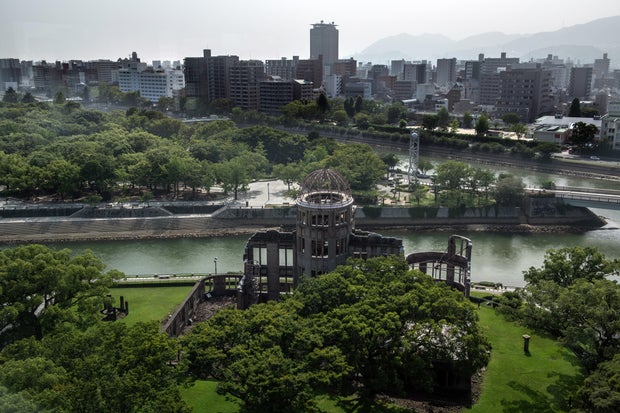
A Ruined Shell, an Enduring Witness
The Fragments Remember
Rising motionless amid the tranquil Motoyasu River stands what most callers simply name the Atomic Bomb Dome. Its broken ribs of brick and twisted steel—photographed at dawn on August 4, 2020—catch the soft summer light the same way shattered crystal catches lantern shine. Each fissure in its stone and every open archway is a mouth that refuses to forget what happened here when the sky opened and fire fell.
A Morning 75 Years Changed
In fewer than ten heartbeats one August morning, Hiroshima transformed from a humming city of wood, paper, and laughter into a field of ash. Estimates still vary—some historians count 90,000 souls, others whisper the figure could stretch to 146,000—but every name, every absence, converges into the same truth: the first nuclear weapon ever unleashed in war wiped an entire city off the living map.
Silence Beyond the Numbers
- Homes erased faster than the blink of an eye
- Rivers running thick with black rain and grief
- Shadow-prints of civilians burned into stone steps
- Children who left for school and never came back
How a Skeleton Became a Shrine
Where most ruins are cleared to make room for tomorrow, the people of Hiroshima chose another path. They fenced the scorched structure, cleaned its bones, and crowned it with silence. Thus the Dome ceased to be mere debris; it became the visible conscience of humankind—mute yet articulate, empty yet crowded with memory. Every visitor who stands beneath its hollow dome steps into a conversation that began seventy-five years ago and refuses to end.
Light Falling Through Ruins
Even on this quiet day the camera, held only days before the seventy-fifth autumn since the bombing, does not see death. Instead it catches light sliding through absence, the same light that, on distant mornings, warms children crossing bridges and illuminates cranes folded from paper. Through such ordinary light the Dome reminds us: cities can be rebuilt, but memory must be tended with even greater care.
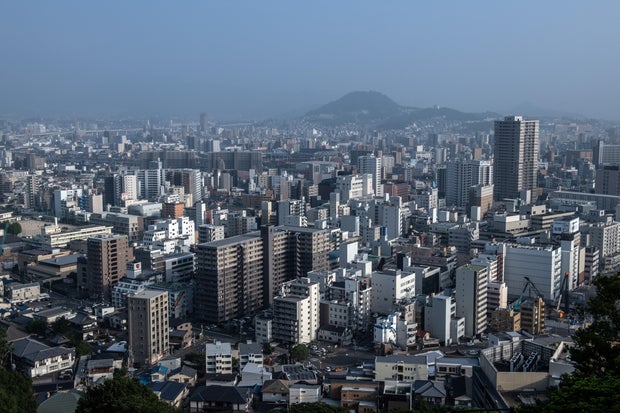
Hiroshima Today: From Atomic Ashes to a Thriving Metropolis
On a warm summer day in August 2020, Hiroshima stands as a testament to human resilience. What was once a landscape reduced to rubble by the world’s first wartime use of a nuclear weapon has been transformed into a gleaming cityscape where streetcars glide past leafy boulevards and glass-fronted cafés buzz with conversation.
A City Reborn in Three Generations
Hiroshima’s revival is measured not only in concrete and steel, but in the lives now rooted here:
Growth That Outpaces Its Pre-War Self
In raw numbers, present-day Hiroshima is nearly three-and-a-half times its estimated August 1945 population of 350,000. The city was compelled to rebuild while absorbing successive waves of returnees and newcomers—each group layering new skills, customs and ambitions onto the scarred terrain.
Key Milestones in Hiroshima’s Renaissance
More Than a Comeback: A Message Forward
Beyond growth metrics, Hiroshima has become a living classroom: schoolchildren from six continents lay paper cranes near the Atomic Bomb Dome, while urban planners study its disaster-recovery zoning as a blueprint for other cities rebuilding after catastrophe. The skyline—once marked by smoke and devastation—now glints with the promise that even the darkest chapter can be followed by an era of collective renewal.
Bombing of Nagasaki
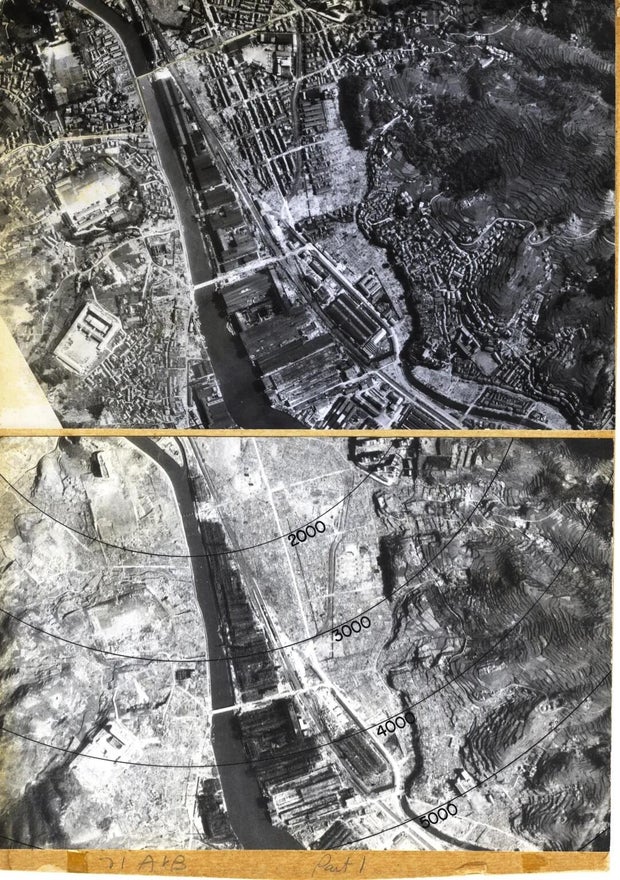
Nagasaki Transformed: The Morning Everything Changed
Mountain-Sheltered Nagasaki: How Terrain Shaped Catastrophe
Unlike the broad, flat sprawl of Hiroshima, Nagasaki’s sinuous coastline and encircling ridges carved the city into a series of narrow valleys. When Fat Man exploded at 11:02 a.m. on 9 August 1945, those very hills deflected the blast in scattered directions. The result was a patchwork of obliteration and untouched pockets—less total ruin than its northern cousin, yet devastation measured still in thousands of lives and buildings.
By the Numbers: A City Scoured
- 14,000 structures—well over a quarter of Nagasaki’s built environment—were reduced to ash and rubble.
- 27% of all buildings inside the city limits vanished in a matter of seconds.
- Even more sobering, only 12% of the prefecture’s buildings would escape without major damage.
From Bustling Port to Silent Streets
Before the flash, Nagasaki pulsed with shipyard clangor, streetcars rattling along the harbor, and crowded hillside markets. Half an hour later, plumes rose like a second mountain range, visible to fishing boats miles offshore. The once-vibrant Catholic enclave of Urakami—home to one of East Asia’s oldest cathedrals—lay beneath a new geography of charred tiles and glass.
Survivors Speak: Echoes Beneath the Rubble
In the weeks that followed, stunned residents returned to sift through steaming debris. They spoke of a silence so absolute that only the drip of water from broken pipes disturbed it—until, days later, the city shook anew with heavy machinery clearing paths through what had been thriving neighborhoods.
Legacy Carved in Stone and Landscape
Today, the valleys that once protected Nagasaki now cradle memorial parks, blackened church bell towers left half-standing, and schools rebuilt on scarred earth. The mountain ridges, witnesses to the sky-splitting light, still overlook a city determined to rise, carrying the memory of what vanishes in an instant—and what endures.
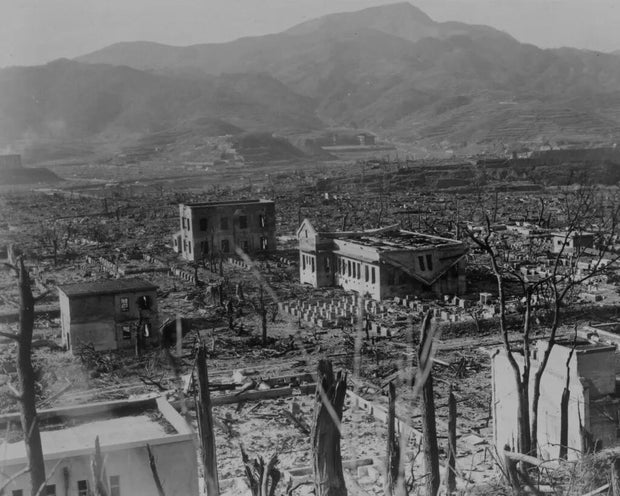
Nagasaki 1948: A City Reborn from Atomic Silence
Three Augusts after the second atomic sun blazed above Nagasaki’s harbor, life had already stitched itself into the scorched seams of the city. What had been blank earth in 1945 now carried roads, tram bells, and the stubborn scent of cedar from newly laid beams. Photographers roaming the hills that framed the Urakami Valley preserved fragments of that tentative springtime—proof that ruin can be overturned, but never erased.
Signposts of Recovery
- Brick chimneys standing lonely amid flat foundations, like solitary watchmen of memory.
- Bamboo scaffolding hugging concrete frames that rose only waist-high but promised an entire skyline.
- Rows of market stalls, canopies stitched from repurposed parachutes, displaying mandarins, dried squid, and second-hand American radios.
The River Reflects More Than Water
The Urakami River—once a mirror for the flash, then a conveyor of ash—now caught reflections of schoolchildren chasing paper boats. An American staff sergeant described the sight in a letter home:
“Imagine cherry petals falling on ground where no grass should ever grow again. The petals keep coming. It feels less like nature and more like deliberate defiance.”
Three Lives on One Lane
1. The Carpenter
Shingo Hattori scavenged nails from twisted railway cars to build a one-room clinic for midwives. Each reclaimed nail, he joked, held “a train’s last memory and a baby’s first cry.”
2. The Teacher
Yukiko Matsuo reopened her kindergarten in a Quonset hut. Lessons began with hand-drawn flashcards of peace cranes because “their wings know the sky is wide enough for everyone.”
3. The Radioman
Tomoya Fujihara fixed discarded U.S. transmitters, wiring them to broadcast local folk songs every dusk. The music spilled beyond the valley and sometimes reached ships still anchored offshore, their crews silent as the shamisen strings drifted over reclaimed water.
Holding Both Grief and Tomorrow
Visitors expecting only ash discovered something harder to digest: a city busy deciding what it wanted to become. Pain lived beside playground laughter; missing people were counted in the spaces between rebuilt houses. Residents placed glass bottles on windowsills so the afternoon sun could scatter rainbows across charcoal walls—tiny prisms saying, We are still here.
Thus, the 1948 photograph held in the U.S. National Archives does not freeze sorrow; it arrests resurrection. Nagasaki, neither ghost nor monument, was simply a city moving its legs again, testing the strength of its own heartbeat one street at a time.
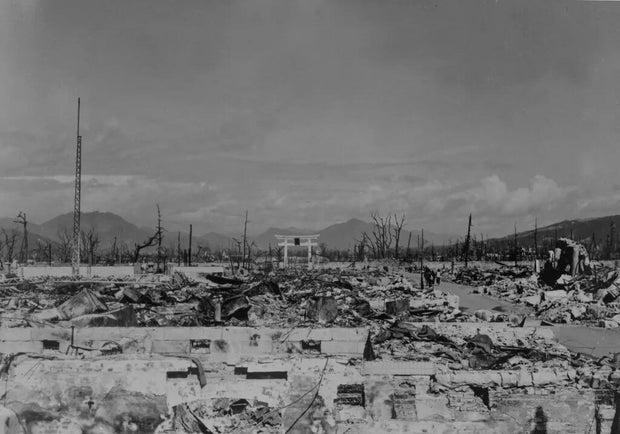
Nagasaki’s Lone Torii, 1948
A City Holding Its Breath
In 1948, scarred brick and blackened timber still outnumbered freshly painted walls. The port lay eerily quiet; fishing boats tied to shattered wharves had not yet swapped canvas sails for rebuilt engines. Children played tag between splintered beams while their parents waited—lists in hand—for rationed nails and windowpanes that were slow to arrive.
The Gate that Refused to Fall
One sentinel endured. The stone Torii at Sanno Shrine stood crooked yet upright, its vermilion paint burned away but its frame intact. Where the blast had torn leaves from surrounding camphor trees, gnarled trunks now leaned toward the gate like parishioners to a priest—silent witnesses to both destruction and endurance.
- Scorch marks spiraled up the pillars like charcoal calligraphy.
- Missing crossbeams left perfect rectangles of sky framed in stone.
- Fresh straw garlands, hung by returning families, fluttered in salt air too timid to cheer.
Between Memory and Blueprint
The International Culture City Reconstruction Law was still a page in a Tokyo briefcase, unsigned and unfunded. Engineers sketched plans on salvaged drafting paper; they drew wide boulevards and planted tiny ink trees in margins that would not become real roots until 1949. Until then, daily life moved at the pace of reclaimed nails hammered into recycled wood.
Portraits at Dusk
As night settled, survivors lit paper lanterns and placed them beneath the Torii. Their candle-glow pooled on scabbed earth, making the gate seem less like a ruin and more like the threshold to a future no one could yet enter. Shadows lengthened; prayers hushed. The charred trunks kept vigil, and the lanterns, one by one, burned out—soft embers against a city still waking up from its own ashes.
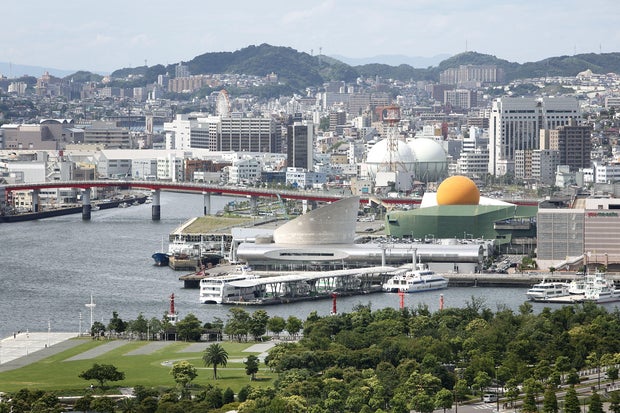
A Panoramic Glimpse of Nagasaki Port from the Overlook of Glover Garden
From August 10, 2010: Standing at the edge of Glover Garden, centuries-old homes of Western merchants cast long shadows over terraced lawns while, one level below, Nagasaki Port Terminal (C) sits like a sleek white ship wedged between green hills and an indigo bay. The city’s tiled roofs shimmer beneath a blistering summer sun, church spires and smokestacks jockeying for skyline dominance.
Moments Behind the Lens
- Viewpoint: The stone-walled garden that once echoed with violin evenings and clinking whisky glasses.
- Foreground: Crumbling brick paths, now polished by decades of visitors, lead gazes directly into the port’s basin.
- Distance: Ferries glide between berths, their wakes drawing silver seams against cobalt water.
Scenes Frozen in the Same Instant
The photographer’s shutter captured more than geography. Hibiscus vines flare scarlet beside a bronze bust of Thomas Glover, while tour groups trade sunscreen for sea breeze at the railings. Somewhere below, a crane swings cargo in slow motion, a silent dance choreographed against the backdrop of terraced slopes and red brick warehouses.
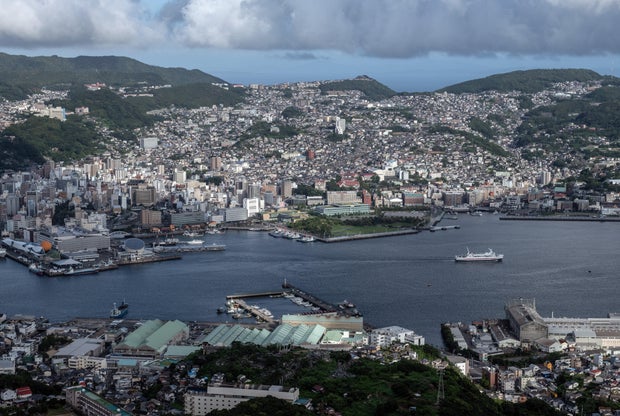
Seventy-Five Years After the Ashes, Nagasaki’s Harbor Sails On
At dawn on August 8, 2020, a sleek white ferry slipped its moorings in Nagasaki Port and glided toward the open sea. From the deck, passengers looked back at a skyline rebuilt from ruin—glass offices, tiled roofs, and green ridgelines where, on the same morning eight decades earlier, only smoke and silence had remained.
A City That Rose From Its Own Shadows
On 9 August 1945, the second atomic bomb annihilated Nagasaki. Streets, factories, homes, and lives disappeared in a white-hot instant. Yet today the numbers speak a quieter kind of defiance:
- Population, 1945 (est.): 263,000 souls
- Population, 2020: almost 400,000 neighbors
These figures, kept by the municipal archives, chart more than demographic recovery; they reveal a collective act of will.
Harborside: Where Past and Future Share the Same Tide
The rebuilt waterfront has become the city’s living hyphen:
- Morning commuters hurry aboard ferries bound for outlying islands.
- Tourist families pause at bronze monuments that list names of those who never left the port.
- Youth volunteers scatter sunflowers each August where black rain once fell.
All of them stand on reclaimed ground—earth once fused to glass, now anchored by deep-rooted camphor trees and the rhythm of daily work.
Beyond Survival: The Quiet Engine of Renewal
Recovery was never a single ceremony; it has happened in small, stubborn increments:
- Neighborhood cooperative bakeries reopened in makeshift shacks as early as 1946.
- Local ship-fitting yards converted wartime know-how into fishing vessels and cargo ships.
- School courtyards that first rang with children’s voices under canvas roofs now host drone clubs and bilingual debate teams.
The Ship Keeps Moving
As engines thrum and gulls wheel overhead, the ferry that left Nagasaki on August 8, 2020 becomes another comma in an unfinished sentence. Behind it, cranes, ferries, shops, and 400,000 hearts carry forward the simple insistence that life, like the sea, always finds its level—and sometimes rises higher than imagination once allowed.
Nuclear warfare, 80 years later
80 Years After Hiroshima, Nine Nuclear Powers and Mounting Alarm
Humanity now counts nine nations that openly or quietly brandish atomic weapons: the United States, Russia, China, the United Kingdom, France, North Korea, India, Pakistan and Israel. Each new headline out of Gaza, Tehran or Kharkiv revives the specter of mushroom clouds, stirring memories many hoped were buried in the rubble of 1945.
An August Ceremony Haunted by Current Conflicts
On a humid Wednesday morning, beneath a sky the color of burnished steel, Hiroshima again chose remembrance over silence. At precisely 8:15 a.m. the city observed 80 seconds of stillness—the same span that once separated the Enola Gay’s payload from the deaths of tens of thousands. Kazumi Matsui, the mayor of a city forever fused to tragedy, addressed diplomats, survivors and schoolchildren gathered beside the skeletal dome preserved to testify against forgetting.
“Regional battles in the Middle East and the grinding war in Ukraine are not distant echoes,” he warned. “They shake the very scaffolding of peace that countless hands have labored to erect.”
Myth of Deterrence vs. Memory of Disaster
Matsui then turned to an argument gaining currency in defense ministries from Moscow to Tel Aviv:
- The claim that atomic warheads represent a rational safeguard rather than a suicidal gamble.
- The claim that credible “first-use” threats keep hostile neighbors in line.
- The claim that stockpiles can be expanded without inviting catastrophe.
In measured yet urgent cadence he rejected each premise, calling them “a wholesale dismissal of history’s gravest lessons.” Behind him, the twisted iron lattice of the peace memorial—once the Industrial Promotion Hall—rusts quietly, a ghost of early morning commerce shattered in an instant of blinding light.
From Testimony to Action
Mayor Matsui closed by urging states to:
- Sign and ratify the Treaty on the Prohibition of Nuclear Weapons.
- Oblige military planners to visit Hiroshima and Nagasaki, witness scarred skin and melted stone.
- Halt the flow of fissile material into new warheads, beginning with the civil stocks that diplomats euphemistically call “reactor leftovers.”
After the bells stopped ringing, survivors—now elders the same age as the atomic age—shuffled through Peace Memorial Park. Among them, 88-year-old Emi Morimoto pressed her hand against a heat-scorched stone she last touched as a child. “I do not see the dome,” she told a group of students. “I see faces that never came home.”
In an era when nations once again flirt with doctrines of tactical use, her words hang in the humid air: urgent, fragile, yet impossible to unhear.

